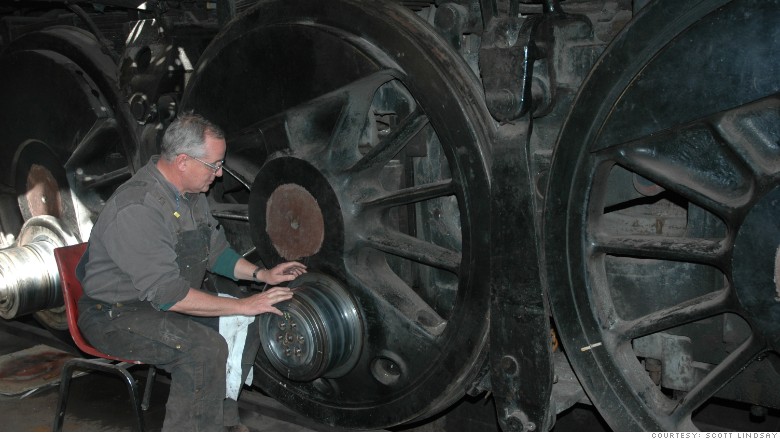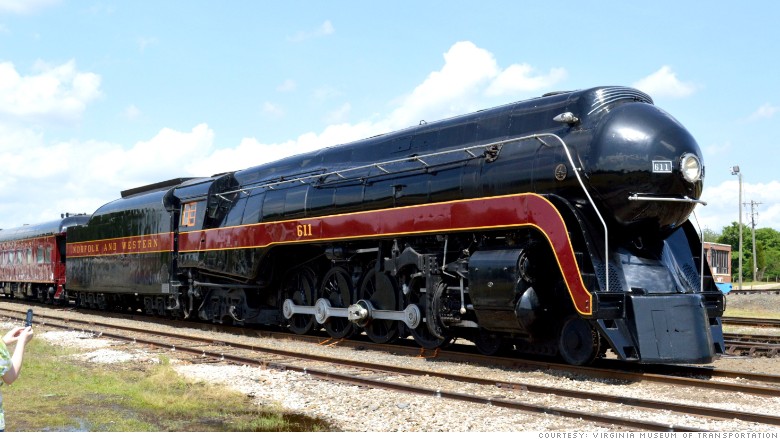
Scott Lindsay relishes the fact that his grownup job allows him to indulge his boyhood passion: tinkering with trains.
"My dad was interested in steam trains," said Lindsay. "I was just three or four years old when he'd take me to visit train museums in New York and New Jersey."
Decades later, Lindsay, 56, is among a handful of experts in the country with deep technical knowledge about historic steam locomotives.
His Birmingham, Ala.-based Steam Operations Corporation specializes in rebuilding and preserving historic engines and other railroad equipment.
The firm's latest project involves getting the "Class J 611" steam locomotive restored and operational for the Virginia Museum of Transportation in Roanoke, Va. When it's ready, the museum plans to use the 611 for tourist excursions.
Between 1941 and 1950, railway company Norfolk and Western (which later became Norfolk Southern) built 14 J Class steam passenger engines numbered 600 to 613.
The "611" was built and weighs a massive 378,000 lbs. It was the last of J Class engines to operate, and is the only one still in existence.
"The 611 is arguably the most modern steam locomotive in existence in the U.S. today," said Lindsay. "It truly represents state of the art steam locomotive technology."
Related: Rebirth of America's dead factories
Lindsay is spearheading the yearlong project, which began last June in Spencer, N.C. The work is extensive.
"It's a full inspection. The boiler is being taken apart. All subsystems, air compressors, steam-powered generators, wheels, everything will be tested, repaired and restored," he said.

Lindsay's boyhood excursions on steam locomotives eventually led to summer job offers that gave him hands-on experience with the engines.
"My career has evolved from being at the right place at the right time," he said.
Related: Women take on manufacturing
He skipped college to work for Norfolk Southern's steam program, learning how to repair, maintain and operate steam locomotives. He launched his own firm in 1993.
"When I started, there were lot of fellows who knew the ins and outs of steam trains. I benefited from working with them," said Lindsay.
It's a different story today.
"The work that I do and the technical knowledge that I have is absolutely a dying skill," he said.
Still, demand for his expertise remains robust. "It's been a surprisingly busy career," said Lindsay. He's done over 50 restoration, maintenance, inspection and consulting projects, mostly in the U.S., since 1977. All of the locomotives are from different eras.
"The oldest locomotive I've worked on was from 1896 and the 611 is the newest," he said.
"Steam locomotives represent the pinnacle of the industrial age," said Lindsay. "It's great if our schools teach courses about them. You have to study the past well to forge successfully into the future."






